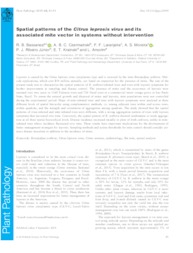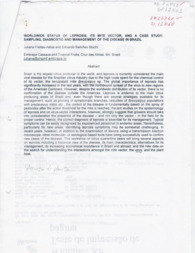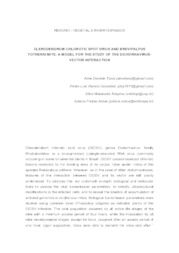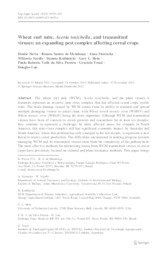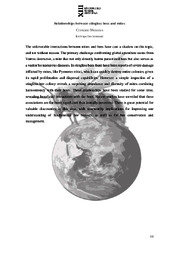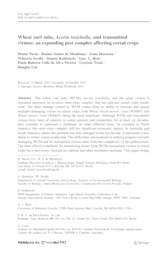Search Publications
Filter by:
| Author(s): COSTA, F. M.; BASTIANEL, M.; FREITAS-ASTUA, J.; KUBO, K. S.; MACHADO, M. A.; GONDIM JUNIOR, M. G. C. The mite Brevipalpus phoenicis (Geijskes, 1939) (Acari: Tenuipalpidae) is responsible for the transmission of coffee ringspot. There is a great interest in the study of Brevipalpus transmitted viruses... ... |
| Author(s): BASSANEZI, R. B.; CZERMAINSKI, A. B. C.; BARBOSA, F. F. L.; MOREIRA, A. S.; RIBEIRO JUNIOR, P. J.; KRAINSKI, E. T.; AMORIM, L. Leprosis is caused by the Citrus leprosis virus cytoplasmic type and is vectored by the mite Brevipalpus yothersi. Miticide applications, which cost $54 million annually, are based on inspection for t... ... |
| |
| Author(s): TASSI, A. D.; RAMOS-GONZÁLEZ, P. L.; ASTUA, J. de F. Clerodendrum chlorotic spot virus (ClCSV), genus Dichorhavirus, family Rhabdoviridae, is a bi-segmented (-)single-stranded RNA virus commonly occurring in some ornamental plants in Brazil. [...]. |
| Author(s): SAITO, M.; ASTUA, J. de F.; RAMOS-GONZALEZ, P.; NOVELLI, V. M.; KITAJIMA, E. W.
|
| Author(s): FERREIRA, D. N. M.; MENDONÇA, R. S. de; SKORACKA, A.; SZYD?O, W.; KNIHINICKI, D.; HEIN, G. L.; PEREIRA, P. R. V. da S.; TRUOL, G.; LAU, D. The wheat curl mite (WCM), Aceria tosichella, and the plant viruses it transmits represent an invasive mite-virus complex that has affected cereal crops world- wide. The main damage caused by WCM come... ... |
| |
| Author(s): NAVIA, D.; MENDONÇA, R. S. de; SKORACKA, A.; SZYDLO, W.; KNIHINICKI, D.; HEIN, G. L.; PEREIRA, P. R. V. da S.; TRUOL, G.; LAU, D.
|
| |
| Author(s): FERREIRA, C. T.; KRUG, C.; MORAES, G. J. de The suitability of the use of pollen to foster the control of citrus pests by facilitating the maintenance of predatory mites in the area has been extensively studied. The aim of this study was to eva... ... |
Observation
Some of Embrapa's publications are published as ePub files. To read them, use or download one of the following free software options to your computer or mobile device. Android: Google Play Books; IOS: iBooks; Windows and Linux: Calibre.
Access other publications
Access the Agricultural Research Database (BDPA) to consult Embrapa's full library collection and records.
Visit Embrapa Bookstore to purchase books and other publications sold by Embrapa.


